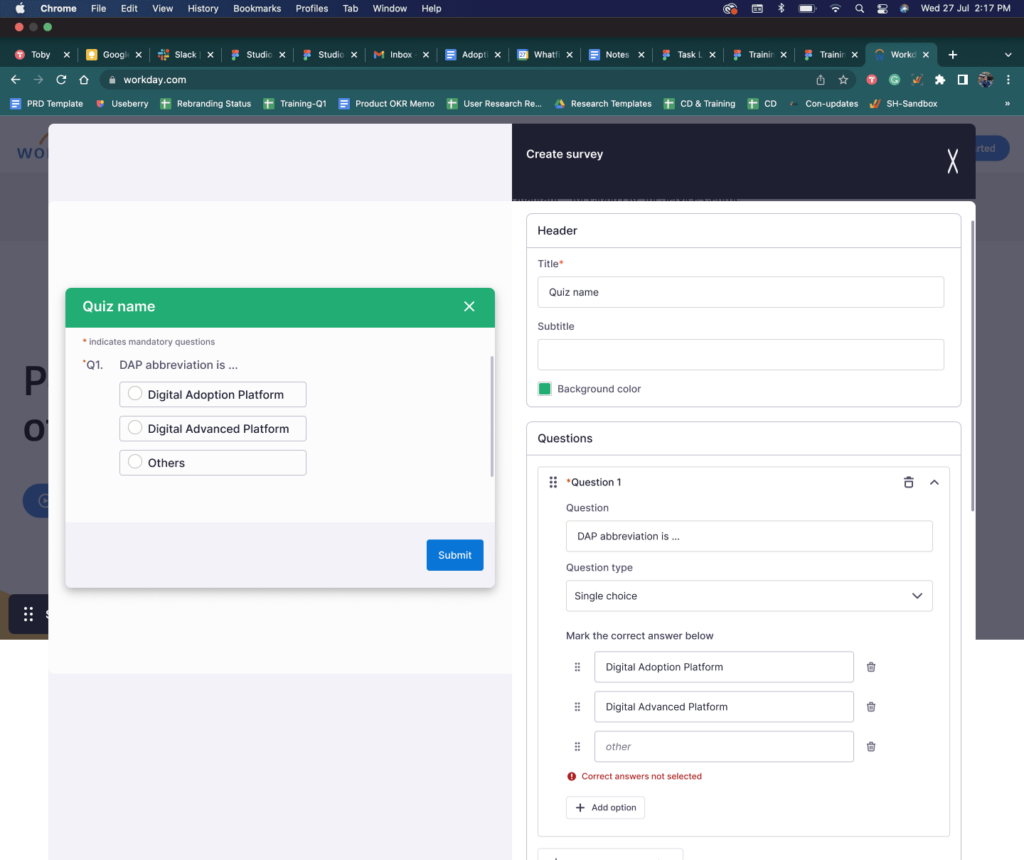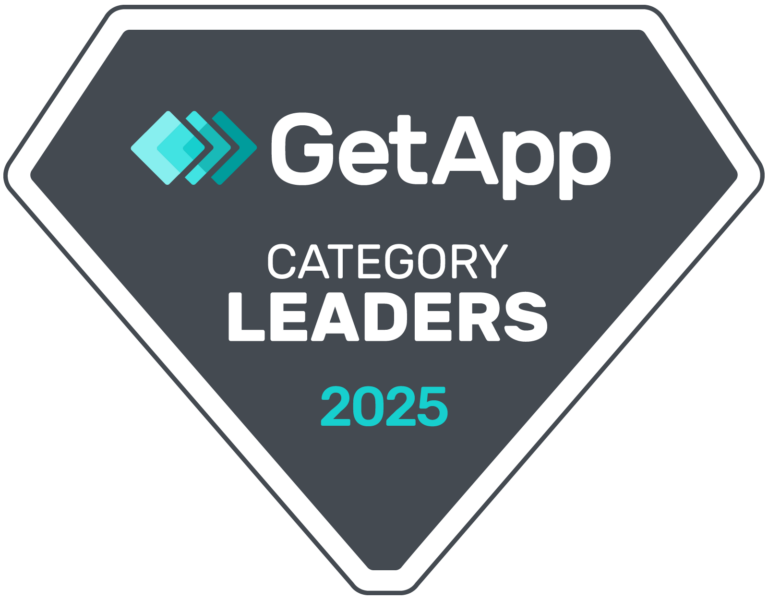HelpHero is a simple, easy-to-use user onboarding software and digital adoption platform for building step-by-step guides, interactive walkthroughs, and product tours without code.
It’s no-code by default, so you can get started using it without wrangling CSS & HTML scripts, compared to code-heavy alternatives like Shepherd.js & PageGuide.js; it’s more powerful than the basic overlays options like IntroJs offer, and costs significantly less than full-stack product experience platforms like Pendo.
There’s no doubt HelpHero is a great entry-level product onboarding platform (with its 5-star G2 ratings), especially if you’re new to product experience optimization or don’t have prior experience deploying product tours and in-app guidance.
Most of the crowdsourced reviews we studied for this article rated the product variously as, “simple to use and integrate,” “easy-to-use,” or, “absolutely in love with [HelpHero].” But, depending on your use case you might realize HelpHero tends to be quite underwhelming when you become experienced with user onboarding best practices and start experimenting with collecting feedback, user behavioral analytics, or serving users self-help content from inside your product.
This article will help you understand how HelpHero works, why it might not be your best option (or why it might!) and the alternatives you should consider instead.
What are the best alternatives to HelpHero?
- Whatfix
- UserGuiding
- Stonly
- Appcues
- Pendo
- Chameleon
- Intro.js
- WalkMe
What Are HelpHero’s Limitations?
Remember our intro where we mentioned that HelpHero’s main value prop is its simplicity?
Well, that focus on single-minded focus on being easy to use appears to be its main shortcoming—it focuses so much on being an entry-level solution for people who’re new to customer and user education that you might find it an underwhelming option if your product has a large user base & you’d like to experiment and do more than the basics.
1. Limited in-app guidance and UX widgets
HelpHero’s features are limited to step-by-step guides, product tours, user onboarding checklists that gamify the user adoption process. It also includes UX hotspots that highlight buttons, features, or notifications.
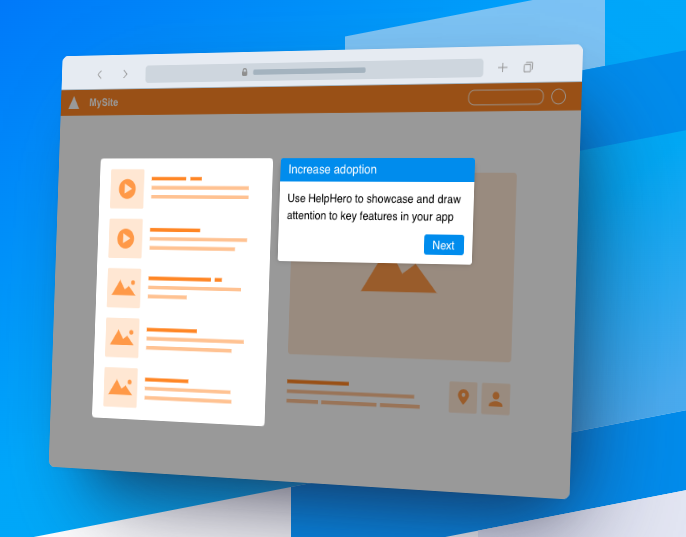
You might think, “That’s quite limited for a product onboarding platform,” and you’re right!
But, here’s the dilemma—for certain users with lite user guidance needs, that might be all you need and in that case, paying more for an alternative decked out with features doesn’t make sense.
But, if you’re building a software product or launching a new education or adoption program where you want to experiment with in-app guidance resources and behavioral analytics, you’ll find HelpHero a very limited option.
2. No self-help and knowledge repository integrations
Guided tours serve as a primer that introduces users to how a product works for the first time. But, beyond that, once you’re deep inside the product you might not have the option of revisiting the onboarding experience at your fingertips.
Instead, product managers usually direct users to their help library like a knowledge base or take it a step forward by embedding a self-help library on their product’s dashboard so that users can quickly search through resources without losing context.
Compared to alternatives like Stonly & Whatfix, HelpHero has no working self-help feature & you can’t integrate third-party solutions (without writing a fair amount of custom code) to make it easier for your users to find relevant content without leaving the page they’re on. You can see an example of Whatfix Self Help – which integrates with your FAQs, knowledge base, user documentation, support center, and more – below:
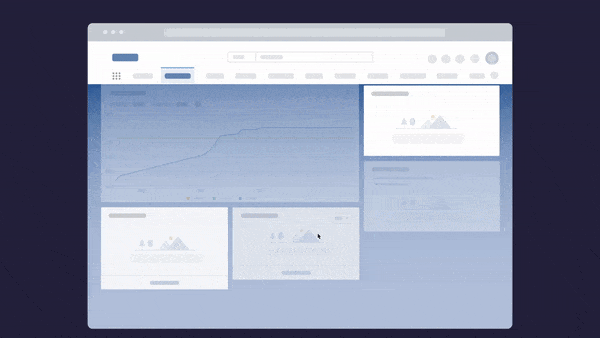
3. Poor user analytics
With user behavioral data and product analytics, user onboarding can become a literal superpower for product teams and transform your product growth strategy. For instance, you can:
- Replay session recordings of users navigating through your user onboarding flows to see which overlays or pages they skip or get stuck on.
- Group users into buckets based on the onboarding features they’ve interacted with or different user personas to compare different groups against each other with a cohort analysis.
- Map user journeys to analyze and understand users’ paths to achieve their “aha!” moment.
- Use heatmaps to see which parts of your onboarding elements users click or hover over
But, none of that is possible if your user onboarding suite doesn’t have these features built into it—trying to integrate them would be technically expensive and wouldn’t work as well as a native solution.
HelpHero has limited analytics features that only show you the completion rates for each product tour you’ve published, but you can drill deeper to see your users’ on-screen behavior or target them with campaigns based on their onboarding engagement history.
4. Lack of user feedback capabilities
The ideal time to collect product feedback is right after a user experiences some part of your application—maybe after they just completed the onboarding process or used a key feature that is critical to user adoption.
At that point, you can inject an NPS survey, a CSAT scoring mechanism, some other customer experience metric or even just a, “How did you like our product, on a scale of 0 – 10?” with an in-app feedback survey.
Again, HelpHero fails at this basic function—since it’s exclusively focused on in-app experiences, there’s no provision to get real user feedback that might help you improve your product, change your user education process, or hit product-market fit faster.
5. Not SCORM compliant
SCORM refers to the Sharable Content Object Reference Model, a bunch of technical standards (a protocol, if you will) for developing interoperable L&D content. That is to say, if an e-learning (or digital adoption) platform is SCORM-compliant, you can export content from it to any other SCORM-compliant learning management platform & it will behave like was developed natively for that platform—because it was, i.e., they share the same content format.
As a result, learning & development platform developers can’t lock their users into their ecosystem & you can easily export every onboarding flow, in-app messaging sequences, tooltips, and hotspots you’ve created on a SCORM-compliant platform (like Whatfix) to another product you want to try out.
Since it lacks this capability, you can’t transfer any in-app experiences you create inside HelpHero to another platform—you’re stuck, as it were. You’ll either have to abandon all your existing data (and recreate them from scratch) or stick with HelpHero forever.
8 Best HelpHero DAP Alternatives
If HelpHero is not the ideal digital adoption platform (DAP) for growing organizations, scaling software product management teams, or apps with a large and multi-type user base, which DAP alternatives should you consider? What criteria should you vet them against? Pricing, feature lineup, or interoperability?
This section will highlight and review 8 of the best alternatives to HelpHero to help you choose a DAP that’s right for your contextual needs and use case.
1. Whatfix
- G2 Review Rating: 4.7 out of 5 stars, across 350+ reviews
- Price: View the Whatfix pricing page for details
Whatfix is a leading digital adoption platform for IT and product management teams who want to onboard new users efficiently, reduce support overhead with self-help content, and help users get some value out of their product quickly with contextual, guided product experiences.
Whether you’re a learning manager trying to get employees to adopt a new enterprise SaaS application (like Icertis, Workday, Salesforce, ADP, or HubSpot) or a product manager working on your new user onboarding and adoption strategy, Whatfix can empower you to:
- Embed a curated self-help widget where users can search through your entire help library and knowledge repositories right from your product’s dashboard. Whatfix’s insights help you review what support content users interact with most and what issues users are searching for that you lack help content on.
- Roll out step-by-step guided tours, interactive walkthroughs, task lists, and other onboarding UX elements like tooltips and hotspots to highlight buttons, unused features, alerts, and notifications.
- Collect user feedback with Whatfix’s simple in-app feedback editor to collect overall product feedback (like NPS) or to gain real-time feedback on certain in-app experiences.
- Analyze product usage and user behavior with Whatfix’s no-code event tracking and product analytics platform, allowing teams to bucket users into cohorts, identify friction areas where users drop out of your app, map your user journeys and paths, measure feature adoption, and more.
- Localize helpful content in 75+ languages, including Mandarin, French, and Spanish.
- Export your digital adoption curriculum and in-app guidance into multiple formats (PDF, video, slideshow, Word doc) with a few clicks—Whatfix is SCORM-compliant by default.

Create contextual user onboarding flows, drive adoption of new features, make in-app announcements, and provide self-help user support with Whatfix
Whatfix is a no-code digital adoption platform that enables product managers to create contextual in-app guidance, product-led user onboarding, and self-help user support – all without engineering dependencies. With Whatfix, create branded product tours, user onboarding checklists, interactive walkthroughs, pop-ups, smart tips, and more – all enabling customers and users with contextual guidance at the moment need. With Whatfix, analyze, build, and deliver better user experiences.
2. UserGuiding
- G2 Review Rating: 4.7 out of 5 stars, across 144 reviews.
- Pricing: Basic tier starts at $1,068/yr for 2,500 monthly active users
UserGuiding is a product walkthrough & user onboarding platform for creating in-product experiences, onboarding users, and growing your adoption rates. UserGuiding makes it easy to:
- embed browseable content libraries on your product’s UI,
- gamify the onboarding experience with checklists,
- encourage adoption with feature highlights and callouts, and
- collect feedback with non-intrusive NPS surveys.
3. Stonly
- G2 Review Rating: 4.8 out of 5 stars, across 84 reviews.
- Pricing: Basic plan starts at $2,388/yr for 4k guide views per month
Stonly’s main USP presents it as a customer service assistant that guides users through (if-then) decision trees to resolve issues independently. It also doubles as a no-code digital adoption platform for enterprises looking to coach new hires with SOPs, checklists, and knowledge bases that automatically answers your (internal) user’s queries using company knowledge sourced from your internal docs and website content.
4. Appcues
- G2 Review Rating: 4.6 out of 5 stars, across 263 reviews.
- Pricing: Basic tier starts at $2,988/yr for 2,500 monthly tracked users
Compared to HelpHero, Appcues offer a clearly superior feature lineup, including a no-code, drag-and-drop editor for building onboarding experiences visually, powerful segmentation that enables product teams target specific buckets of users, varied feedback tools (NPS surveys, multi-choice quizzes, free text answers, etc.) and native support for mobile applications.
5. Pendo
- G2 Review Rating: 4.4 out of 5 stars, across 1, 204 reviews.
- Pricing: Not available; crowdsourced data suggests that lower-tier prices start at ~$12,000/yr.
Pendo is more of an entire product experience suite and it accommodates pretty much any growth play you have in mind—in-app guidance (using a visual designer),collecting feedback, and product analytics. But, like all software platforms that try to do a lot at once, Pendo can be prohibitively expensive, costing up to $50k annually.
6. Chameleon
- G2 Review Rating: 4.4 out of 5 stars, across 147 reviews.
- Pricing: Usage-based billing; starts at $3,348/yr for 1,900 monthly-tracked users
Chameleon promotes itself as the “deepest product adoption platform,” for SaaS teams looking to control, configure, and customize their user onboarding experiences beyond the bare minimum. To help you achieve that, Chameleon uses a combination of:
- UX feedback (multi-choice microsurveys, NPS surveys, CSAT scoring),
- guided product tours (with optional CSS styling to help you customize further),
- dynamic tooltips (add a flexible UX layer over buttons, images, etc. to explain them briefly), and
- hovering help menus/buttons (that expand to show helpful resources and tutorials)
7. Intro.js
- G2 Review Rating: N/A
- Pricing: $300 one-time cost
Intro.js is a lightweight, open-source JavaScript library that’s designed to help technically savvy product managers and L&D leaders to design user onboarding elements, such as guided walkthrough flows, UI highlights for a tiny fee— a $9.99 one-time for hobbyist projects and a $299.99 lifetime license for commercial projects. Although you can self-host Intro.js for free, you can use it if you’re a typical product engineer looking for a no-code tool with a drag-and-drop interface.
8. WalkMe
- G2 Review Rating: 4.7 out of 5 stars, across 186 reviews.
- Pricing: Pricing: Contact for a custom quote
WalkMe is a digital adoption platform designed to help growing organizations coach employees through workflows with personalized guidance, self-help resources, and in-app engagement across their work applications.
Why Whatfix Is the Best HelpHero Alternative
Again, reviewing a competitor’s product can be challenging, especially when your product is the better option—you must balance self-promotion & objective reporting to help our readers make the ultimate decision.
Like we’ve shared above, if you prefer a lite user education and product onboarding platform, HelpHero can perfectly meet your needs. But, if you want—
- more flexibility over the onboarding flows you create, plus
- the ability to integrate self-help inside your product, and
- SCORM-compliant content you can take with you
—Whatfix would hands-down be a better fit.
Here’s a few more reasons why you should invest in a data-driven, mature digital adoption platform like Whatfix
1. No-code content editor with branded customization capabilities
At its core, Whatfix uses a drag-and-drop editor you can use to order onboarding flows, edit product tours using a WYSIWYG interface, and make changes to your user education experiences without writing code.
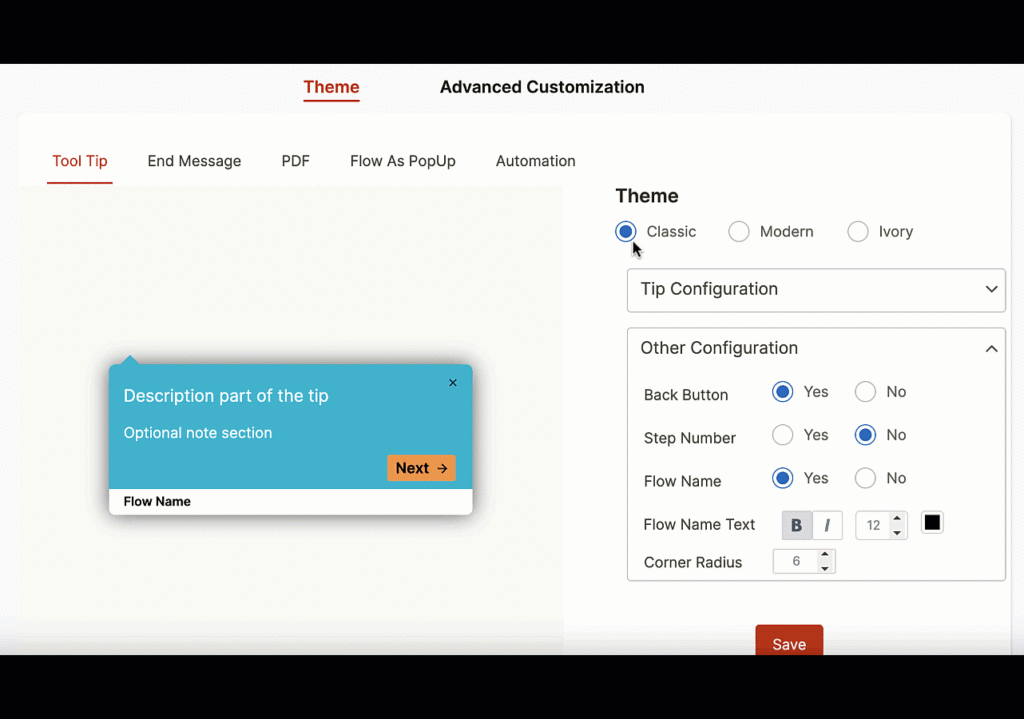
Whether you’re trying to serve users a survey, inject a bottom sheet into a page, highlight an element with a beacon, or provide contextual information with a tooltip, the Whatfix editor is no-code by design and you can visually manipulate onboarding elements to suit your taste.
2. Self-help center with knowledge repository integrations
By default, Whatfix has self-help capabilities built to allow product managers to embed searchable library widgets on their product’s dashboard and integrate with third-party knowledge management or wiki tools, FAQs, product documentation, support articles, and more.
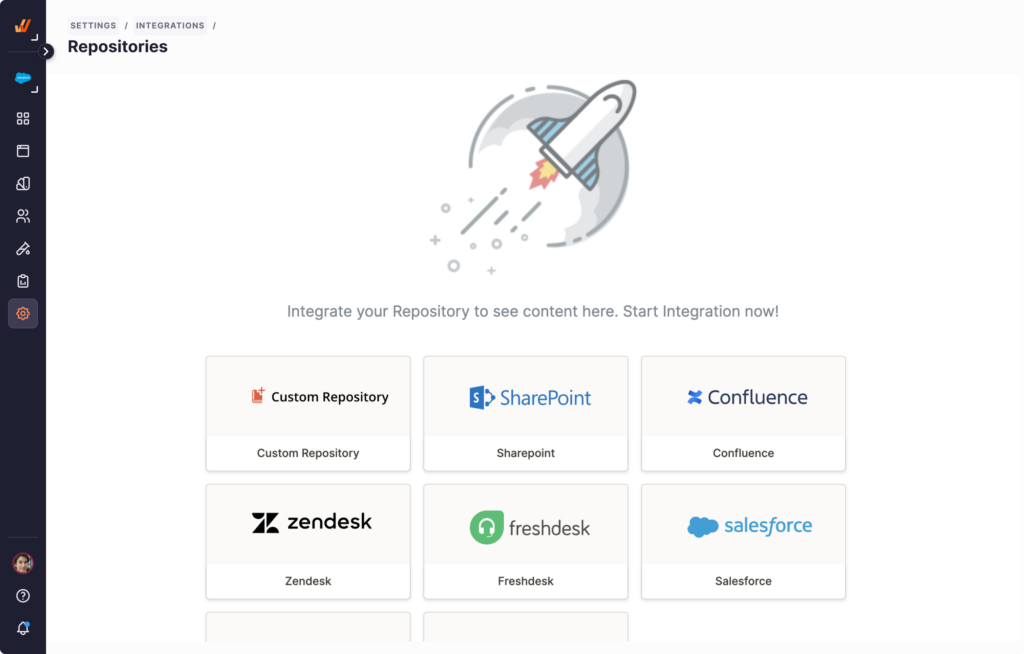
As a result, users don’t need to leave the page they’re on or break their context to find relevant resources—you can search through explainer videos, how-to articles, and product documentation on the same page you’re navigating.

3. Advanced product analytics
Whatfix Analytics completes user education by letting you monitor how your users engage with your product education content—without being invasive or exposing their PII. Our drag-and-drop tagging editor reduces the barrier to collecting actionable product insights so that product management teams can track clicks, page visits, and mouse hovers without writing code.
With Whatfix Analytics, analyze product usage and user behavior its no-code event tracking and product analytics platform, which allows teams to bucket users into cohorts, identify friction areas where users drop out of your app, map your user journeys and paths, measure feature adoption, and more.
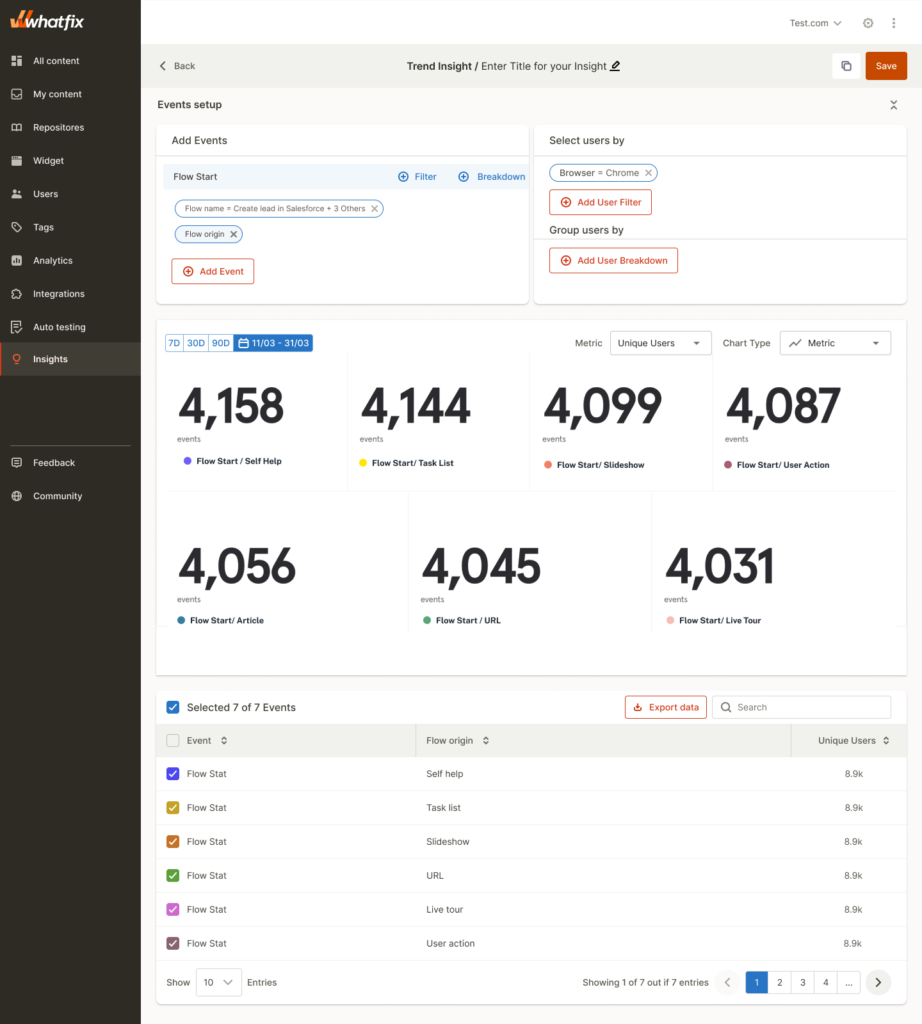
On the management side, Whatfix Analytics renders data in prebuilt dashboards for better analysis and integrates with third-party business intelligence tools where you can extrapolate your core assumptions against hypothetical scenarios.
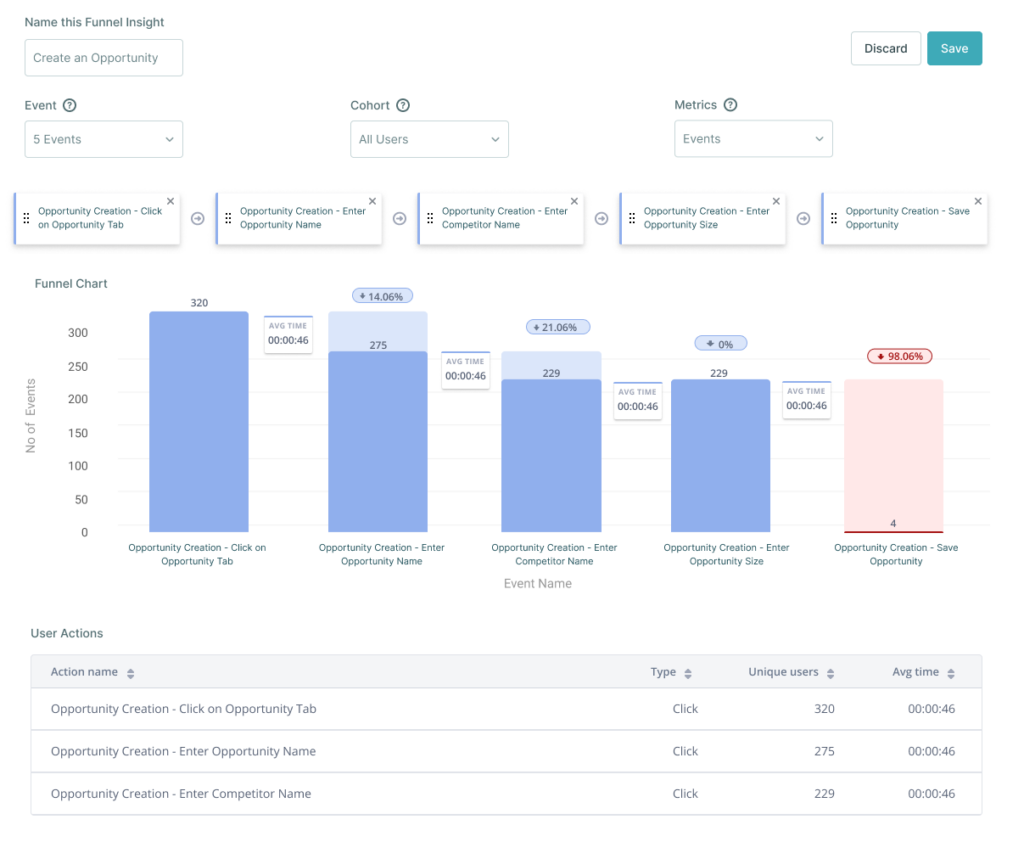
4. User feedback capabilities
Collect feedback with either NPS surveys or detailed free-text polls, either for specific features or your entire product. Embed surveys in pop-ups after specific experiences (like your new user onboarding flow) to gather qualitative feedback on how effective users found it. You can also gamify this experience by create in-app quizzes to help increase your feedback submissions and measure your education and training’s effectiveness.
